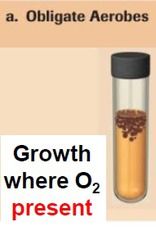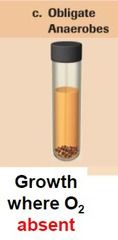![]()
![]()
![]()
Use LEFT and RIGHT arrow keys to navigate between flashcards;
Use UP and DOWN arrow keys to flip the card;
H to show hint;
A reads text to speech;
43 Cards in this Set
- Front
- Back
|
_______- discovered the cork cell in a plant in 1665. |
Hooke |
|
|
Cell Theory states that... All living things _____________ Cells are unicellular or _____________. Cells are fundamentally __________. Cells come from _____________. |
are composed of cells. multicellular alike pre-existing cells |
|
|
____________ was the first forms of life on Earth. |
Bacteria |
|
|
The 3 recognized domains are __________. |
bacteria....archae.... and eukaryotes |
|
|
___________ are organisms that does not require oxygen. |
Anaerobes |
|
|
___________ are organisms that require oxygen. |
Aerobes |
|
|
What are the 2 ways microbes get energy? |
heterotrophs autotrophs |
|
|
Organisms that require compounds as an energy source are ______________. Ex: animals, humans |
heterotrophs |
|
|
Organisms that utilize energy from the sun or the metabolism of inorganic compounds are ____________. Ex: plants |
autotrophs |
|
|
heterotrophs depend on ____________ for energy. |
autotrophs |
|
|
On the pH scale, would you find a higher concentration of hydrogen ions (H+) in the acids or in the bases? |
acids |
|
|
Humans have to have oxygen, therefore they are ______________ aerobes. |

obligate
|
|
|
______________ are bacteria that can grow better in O2, but can shift their metabolism and also grow int he absence of O2. |

facultative anaerobes |
|
|
_____________ lacks enzymes and O2 is toxic to them. |

obligate anaerobes |
|
|
_____________ are microbes that grow under harsh environmental conditions. |

extremophiles |
|
|
Extremophiles that like very hot temperatures are called ________________. |
hyperthermophiles |
|
|
Extremophiles that like heat are called _____________. |
Thermophiles |
|
|
Extremophiles that like cold are called _____________. |
psychrotroph |
|
|
Extremophiles that like extremely cold temperatures are called _______________. |
psychrophiles |
|
|
An extremophile that prefers the same temperatures as a human pathogen are called __________. |
mesophiles |
|
|
microbes that are cold, react _____________. microbes that are hot, react ___________. |
slow fast |
|
|
Do prokaryotes have a nucleus? |
no |
|
|
Cell division in prokaryotes is called ____________. |
binary fission |
|
|
Cell division in eukaryotes is called ______________. |
mitosis or meiosis |
|
|
A major distinction between a prokaryotic cell and an eukaryotic cell is the presence of a _______________. |
nuclear membrane |
|
|
Is most bacteria considered to be heterotroph or autotroph? |
heterotroph |
|
|
The smallest unit of measurement is the _________. |
nanometer |
|
|
Give an example of an obligate intracellular parasite. |
a viruses |
|
|
__________ does not have nucleic acids in its structure. |
prions |
|
|
The five-kingdom system of taxonomy is accredited to ____________. |
Whittaker |
|
|
According to Woese, _____________ arose from Eucarya. |
Archaea |
|
|
What bacterium produces an enzyme that catalyzes DNA synthesis? |
Thermus aquaticus |
|
|
Which microbe is not a disease producer? |
archaea |
|
|
What bacterium produced a red pigment and contaminated communion wafers during mass in 1263? |
Serratia Marcescens |
|
|
Bacteria, viruses, fungi, and protozoans are microbes. Name another group that falls under the microbial umbrella. |
prions or algae |
|
|
Compounds of carbon are called _____________. |
organic compounds |
|
|
Organisms that do not require organic compounds are called _____________. |
autotrophs |
|
|
The "energy compound" is called _________. |
ATP |
|
|
Strict anarobes are killed by ____________. |
oxygen |
|
|
The term ______________ is used to describe organisms too small to be seen without a microscope. |
microscopic |
|
|
______________ are the ancestors of eukaryotes. |
prokaryotes |
|
|
Most bacteria reproduce by _____________. |
binary fission |
|
|
___________ are infectious protein molecules. |
prions |

